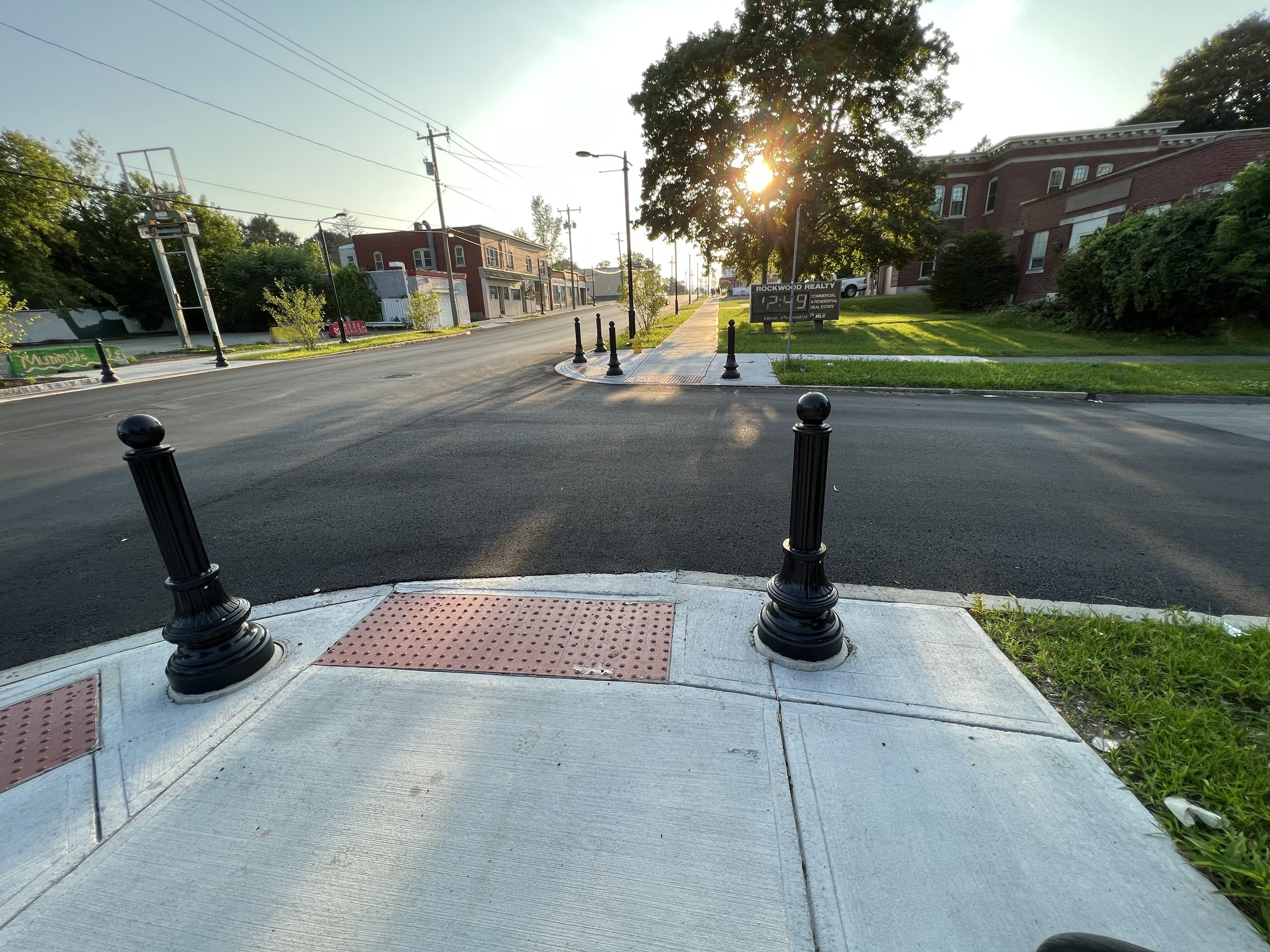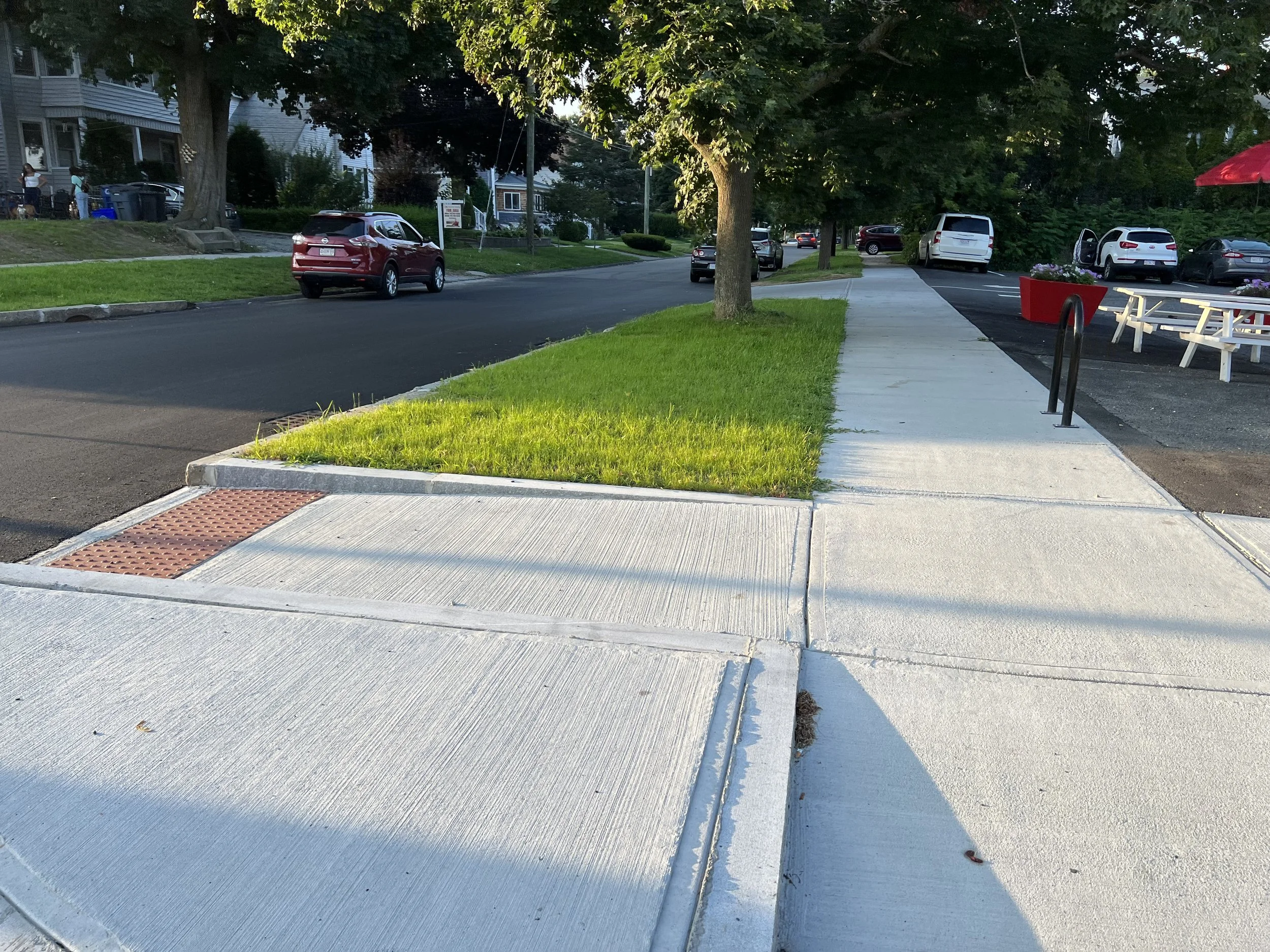Pittsfield Pedestrians Get a Raise
Pittsfield Pedestrians get a Raise
Tyler Street’s redesign includes the city’s first raised pedestrian crossings. Ever wondered how exactly they work or why they matter? Probably not, but I’m going to tell you anyway. Rather than a sidewalk sloping down to meet the surface of a road, the road slopes up to meet the level of the sidewalk, typically 6 inches. Raising up crosswalks improves the walking experience, makes intersections safer, and can help calm traffic speeds.
Raised crossings come in a couple flavors. You may have already seen Lenox’s raised crossings installed within the last couple of years. Those come close to “speed tables,” raised plateaus with an incline and decline on either side. I say they come close because the rise and fall are barely noticeable while driving and do not induce much of a slowdown for vehicles. Speed tables are often placed midblock — that is, not at an intersection.
Tyler Street’s raised crossings are at an intersection: the T-junction with Tyler Street and Cortland Place. At this location, the entire intersection is raised up, rather than just the crosswalks. Again in this instance, the rise and decline of the pavement is not sharp enough to cause much of a disturbance while driving, at least from what I noticed. That doesn’t mean the effort is in vain, though.
Other advantages to raising crossings, besides traffic calming, are weather-related. Sidewalk ramps that slope down to the street are notorious for trapping water. How many times have you had to puddle jump when crossing the street on a wet day? Raised crossings send the water off to the side, rather than to the bottom of the ramp. In the winter, slush will be less prone to piling up than at a normal down-sloping ramp. There is also less risk of slipping if ice forms, since the sidewalk stays level.
August Events and Activities
Word of the the week: Curb-Cut Effect
The breaks in the curb that allow barrier-free access to crossing the street didn't always exist. Without ramps, pedestrians had to step off the curb, cross the street, and step back up. Of course, those without the capability of climbing steps faced much more difficulty. Disability rights advocates fought persistently to create a universal policy of putting cuts in the curb that sloped down to a level surface, which wheelchair users could navigate safely and independently.
These curb cuts also had unintended benefits for others: people pushing strollers and carts, bicycle riders, and small children. The spillover benefits that apply to others beyond the focus of a project has come to be known as the "curb-cut effect." What other examples of this effect can you think of?
P.S., I highly recommend this episode of the 99% Invisiblepodcast, which details the history of the rise of curb cuts and the fight for universal accessibility in the public realm. Especially relevant with the recent 33rd birthday of the Americans with Disabilities Act.
Thank a curb cut today!
If you would like to receive future newsletters, please sign up below!






